Know What I Mean? Adderley, Evans, et.al. Shoot-Out
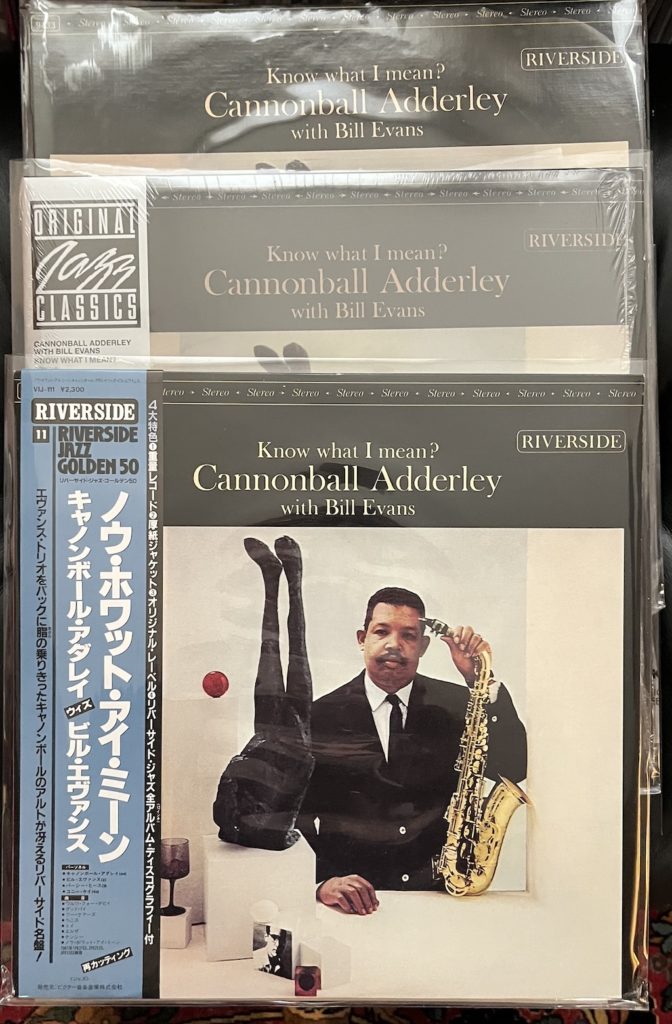
This album, featuring Cannonball Adderley and Bill Evans, is considered one of the best older jazz records available, both musically and sonically. I am not going to delve into the history or importance of the album since it has received considerable attention from the date of its release in 1962. Instead, we will devote time to comparing three accessible copies:

OJC-1984 Side 1
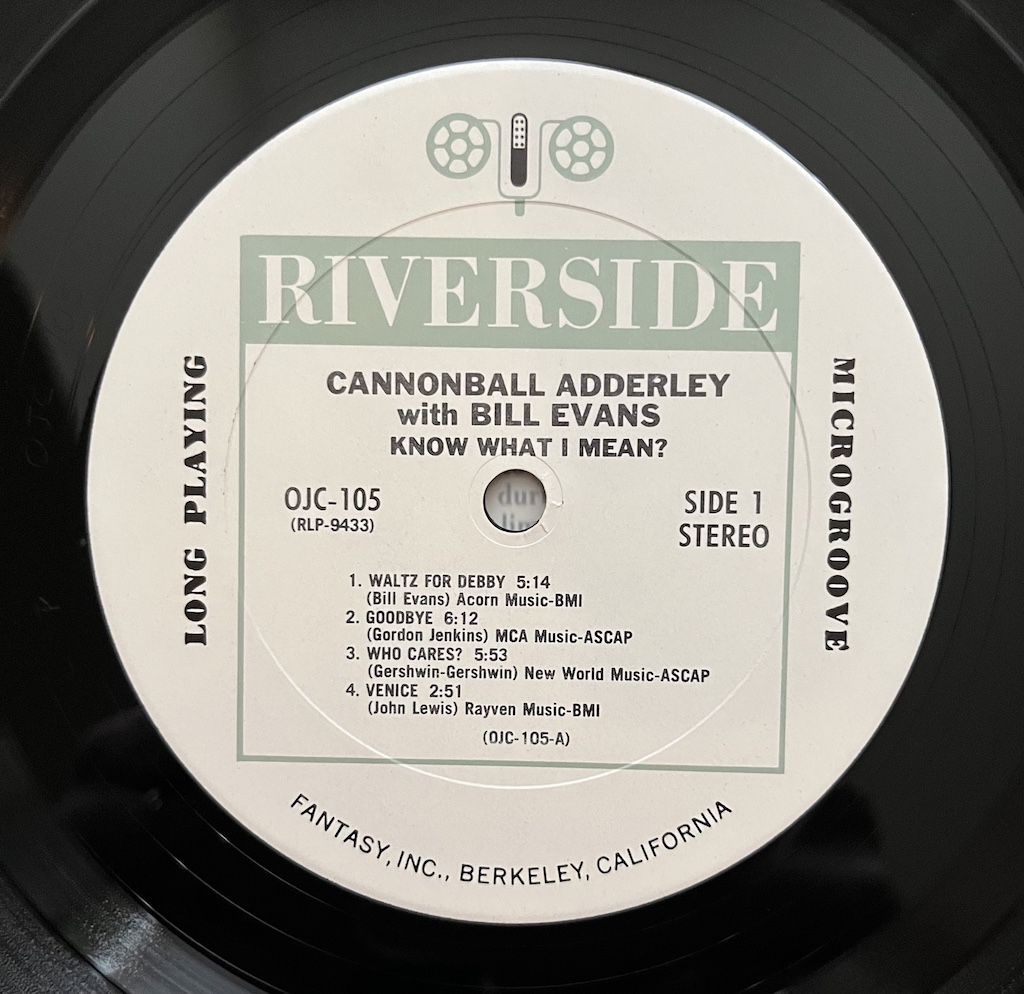
First up, the common OJC from the mid-‘80s. I used to be able to find records in this series new for less than ten bucks at places like Tower; these were most likely analog sourced and are, in the days of fudging clear information about sourcing, even more of a bargain. Near mint copies of this one seem to be listed in the $30-40 range these days, so not too punishing on price.
The copy I’m playing has a very natural sound—a relaxed easy flow, and piano sounds are robust without sounding overdone.
“Waltz for Debby” opens and appears here before it became the title of the Bill Evans trio album recorded at the Vanguard (Although Evans first recorded it in the ‘50s). Maybe it’s a psychoacoustical thing, but with a good recording over a good system, everything seems just a little slower, less rushed, and sounds more open with more to hear. That’s certainly the case with this track.
The interplay with the bass (Percy Heath) is just lovely with a slight snap in the background from the hi-hat, when the horn comes in, it has a little bite (something you hear in real life) but isn’t harsh. (Goodbye, side 1, track 2); Connie Kay’s drum work sounds like the work of more than one person on “Who Cares?” (side 1, track 3). “Venice” finishes the side with a nice loping piano lead from Evans. Everything sounds in balance here–you could not want a better sonic view of the proceedings or the performances.
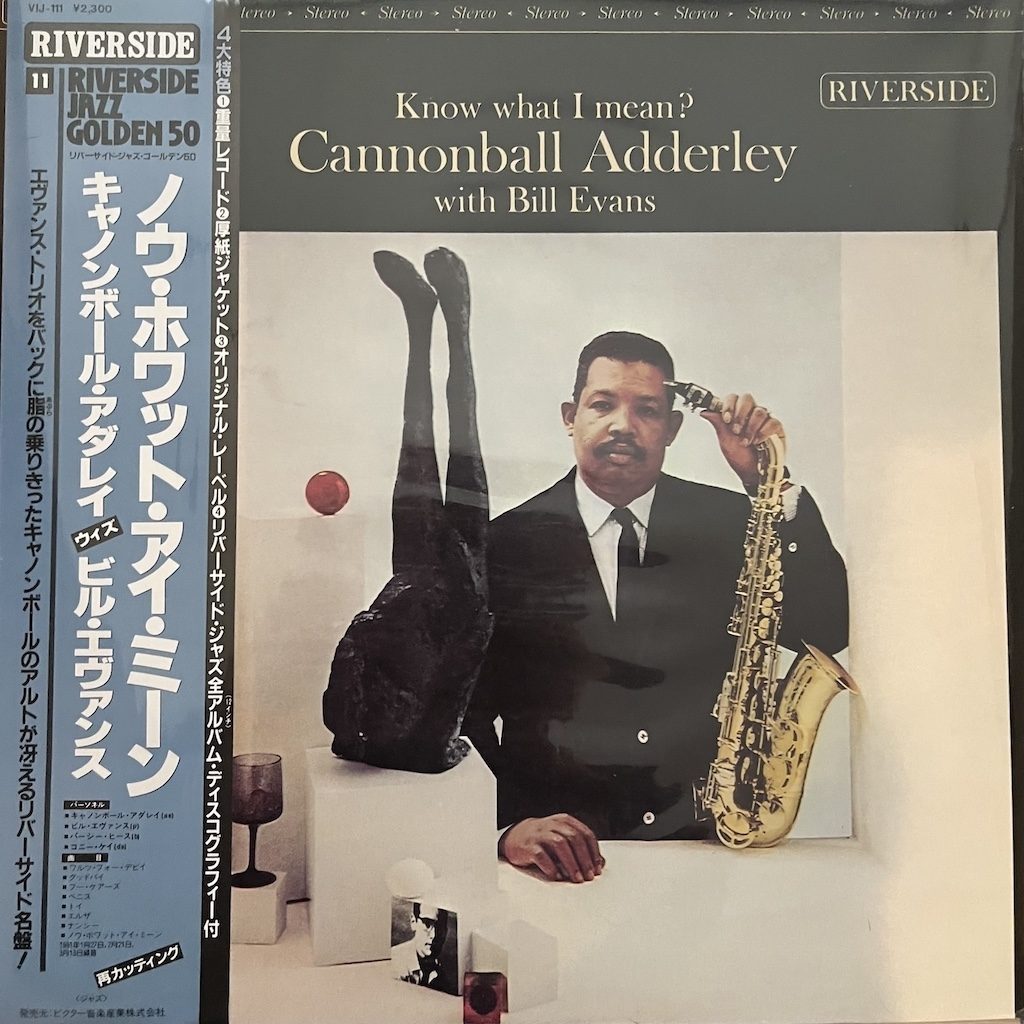
Japanese Pressing-1984 Side 1

The vinyl surface is quieter- that much is immediately noticeable at the drop. My initial reaction to “Waltz” is that the instruments don’t sound quite as visceral or immediate as the US OJC. The piano-bass interplay on “Goodbye” is just as entrancing as the U.S. copy, maybe a little smoother sounding- yes, the trope about vinyl quality from Japan is true. I find some of the brighter EQ associated with pop/rock issues from Japan doesn’t seem to come into play with jazz records nearly as much.
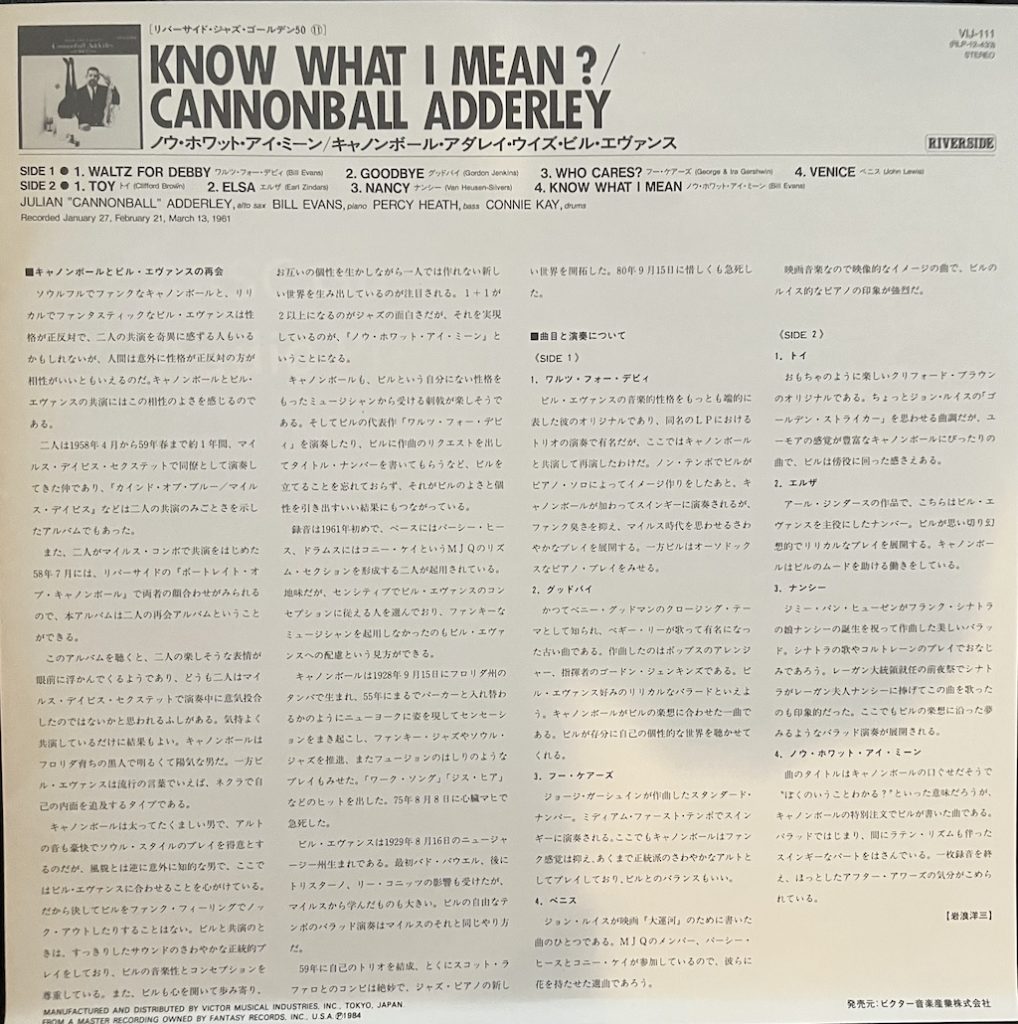
“Who Cares” sounds great, the double bass may be a bit more pronounced here and the drums less so, compared to the U.S. copy. “Venice” is strikingly quiet backgrounds with plucked bass and a soft mellow horn part. It does sound a little muted compared to the U.S. copy, but man, those quiet surfaces! When everybody joins in, the sound blooms, and the stage gets larger, but the bass instrument is pure bliss, localized, full dimensioned.
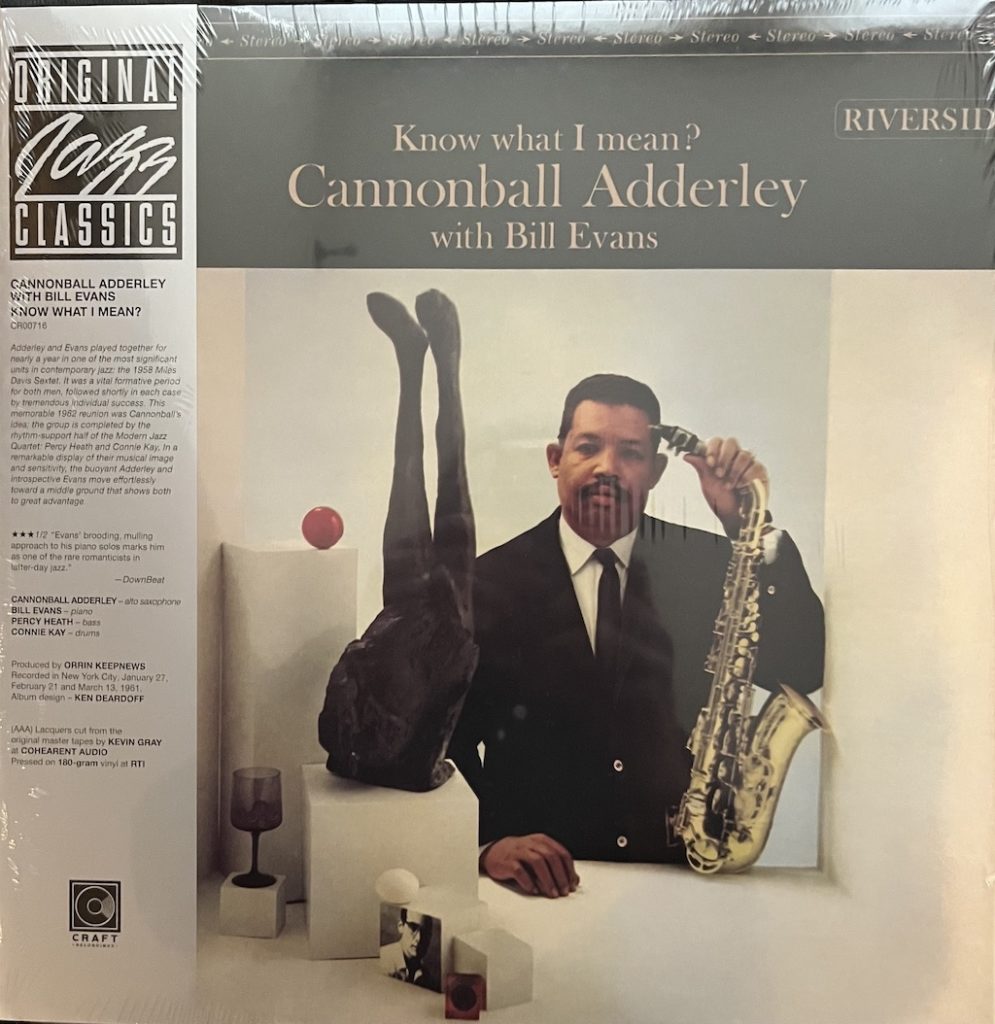
Craft- Recent Reissue Side 1
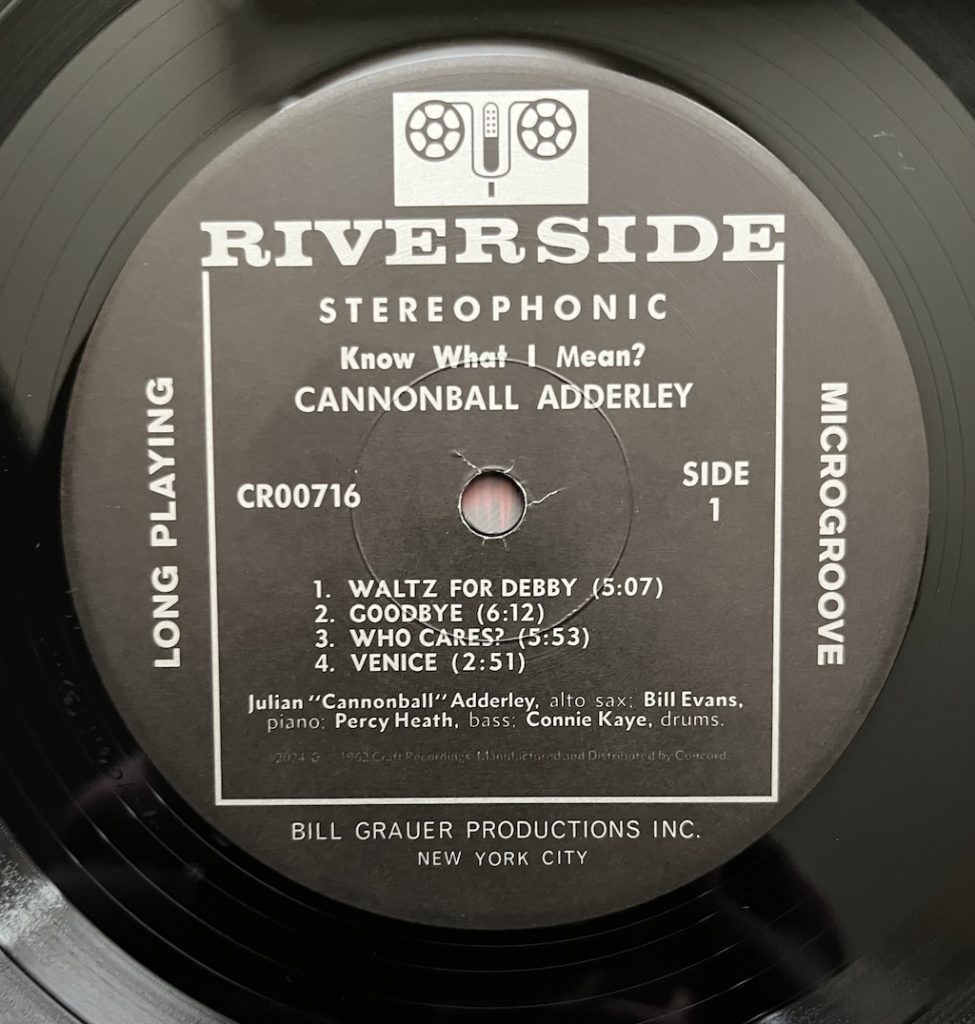
This reissue, cut by Kevin Gray and pressed at RTI, will give you the goods but first impression is that it doesn’t have the raw, visceral quality of the older OJC. It is very quiet, like the older Japanese copy. I respect Mr. Gray’s work—he’s done wonders with some older recordings- and I preferred his recuts to some OGs, as covered here in other reviews.
The quality of the original recording is so good that, without taking away from Gray’s efforts in the least, if you heard this record without comparison to other copies, you’d be more than happy—it’s a known jewel.
“Waltz” is better than good. “Goodbye” has a little gravitas that might be missing from the Japanese copy; by that, I mean the bass is not more prominent but sounds deeper, underlining the piano and horn lead. This track has a nice pace on this record. And I do like the upper registers of the piano here—some harmonics are captured that might be the result of Mr. Gray’s ability and more modern cutting equipment.
“Who Cares” sounds very balanced but doesn’t have quite the “bite” of the horn that the OJC does—tape age? Bass is also impressive on this track- it seems to go deeper, and the drum stick/clack is prominent here. Evans’ excursions on the ivories are clear but lack that extra harmonic “halo” that gives the piano its due. “Venice” really benefits from Gray’s work here, as the bass leads us in—I’m not listening at “LOUD” levels, and you can feel the instrument. I did check a decent handheld SPL meter, weighted “C” and the levels are comparable.
OJC- Side 2
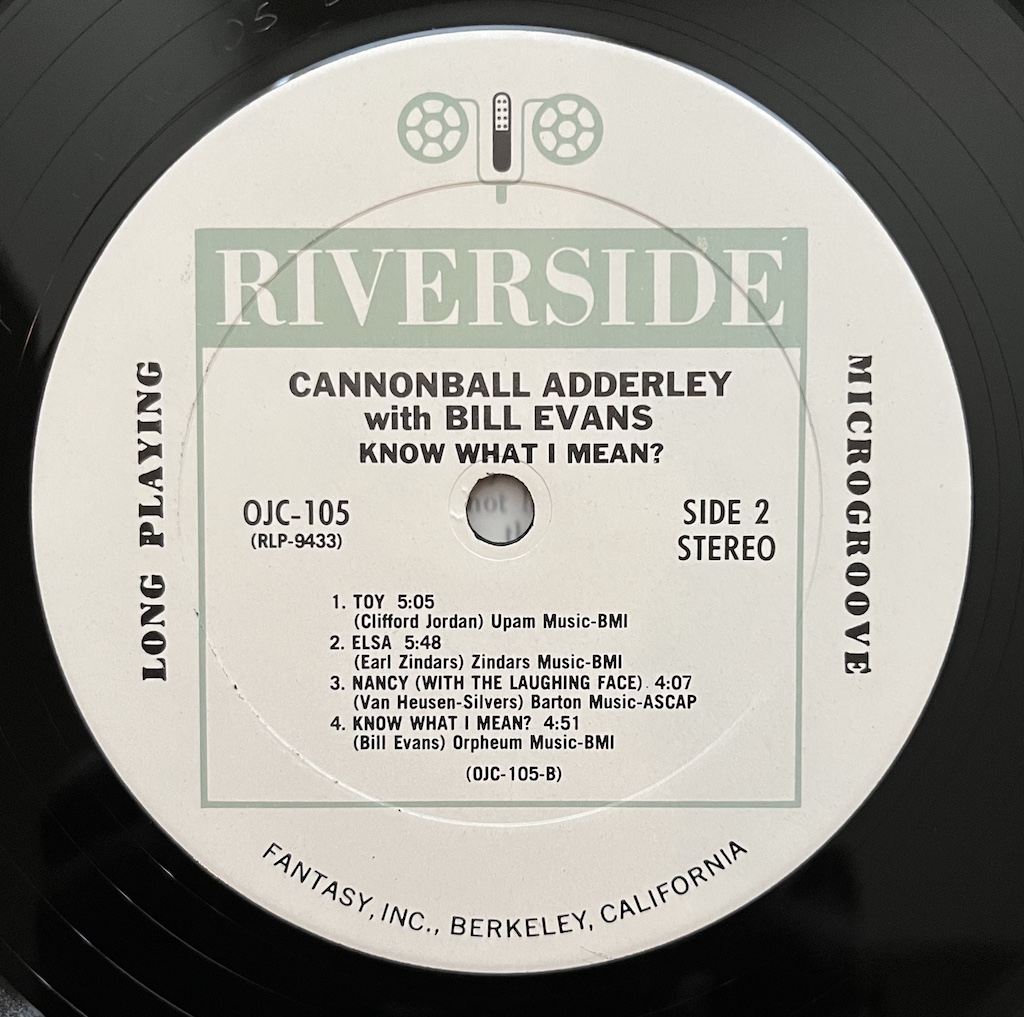
“Toy” starts with an almost ominous, deep drum shuffle and the horn quickly flares in, contrasting with a joyous bounce. I think this side is a little quieter- perhaps because it did not get played as much (I bought this used as a Mint- record). Again, I’m hearing that bite to the leading edge of the horn which sounds “right” to me. I used to go to the clubs and lounges in NYC and you’d sit pretty close, eat a steak, enjoy a small combo and catch up on the long days of work (I liked a few spots in the Village back in the day).
This record sounds just right to my ears—it is an open window on the sound with nothing to quibble about.
The second track on side 2, “Elsa” is a slower ballad, with some nice minor key work—those harmonic overtones on Evans’ piano aren’t pronounced but are readily discernable without studied listening. The piano sounds pretty realistic here as the drum work shuffles in the background. Then the horn comes in, playing off the minor keys, building and diving, some intricate filigrees, and the piano responds with elegance. Here, those upper harmonics on the higher register keys are in abundance. Cool, blusey interlude by Evans takes us out. “Nancy”(With the Laughing Face) is led in by Evans, Adderley quickly follows, a mellow study giving the horn free reign to wail (with restraint) as the piece progresses, and its Evans again, who throws back to the horn which reaches higher; the interplay between the two featured artists is underscored by a beautiful bowed bass at the finish.
The album ends with the title cut-“Know What I Mean”- this is a slow, angular piece of more modern jazz (for its time) which gives each performer their moment. The bass/drum backing to the horn (keys off for the moment) changes things up, faster paced as the piano comes in for its moment, those upper registers are lively, and Evans’ technique is splendid here. We slow down and the horn leads us out, alternately mourning and joyous as Evans trills to the finish.
Japanese Side 2
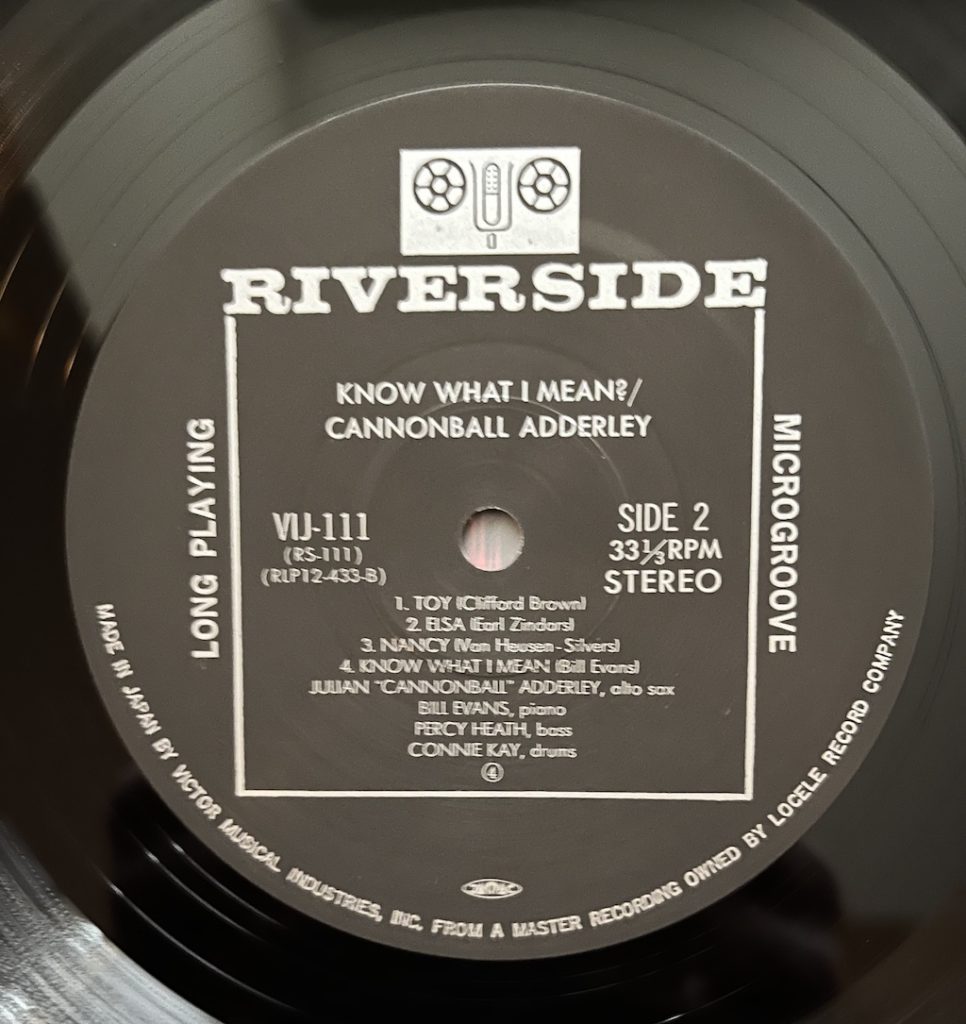
Side 2 of the Japanese pressing is consistent with the sound of side 1- quiet surfaces, not quite as visceral as the U.S. copy but we are talking about small degrees here. As I mention below, condition is also key since you’ll be buying a 40 year old record. (My experience buying from Japan has been uniformly positive and there a few vendors there who do DHL express or Japanese Priority which puts the record at your door in a week or less, albeit at a price higher than the cost of a domestic pressing). On “Toy,” the piano sounds fine, but doesn’t have quite the upper harmonic overtones as the U.S. copy. The horn doesn’t have the bite of the U.S. either.
“Elsa” might benefit from this slightly darker presentation on the Japanese record (contrary to stereotypic expectations about Japanese EQ). To me, the overtones of the piano just are not in evidence compared to the U.S. copy. The horn is warm sounding, rich, and the piano following is a little darker than the U.S. but not oppressively so.
“Nancy” is a lovely composition, and it is so well played here. (Who knew Phil Silvers was a lyricist?) The piece has a bluesy quality that is more in evidence here, perhaps owing to the warmer, slightly darker presentation. Evans’ piano on this track sounds better than the other tracks- I’m hearing those upper register harmonics, and his articulation of the notes is simply magnificent, as is the horn return. The finish is comparable to the U.S. copy.
“Know What I Mean” is, after the piano intro, struck bass, juxtaposed by the horn, piano fills, and when we go “keys off” the bass/drum interplay is great- the drums sound very spacious, the horn is a little lower in volume then comes up as it takes over. When Evans piano comes back in, some of those harmonics are evident.
Craft Side 2
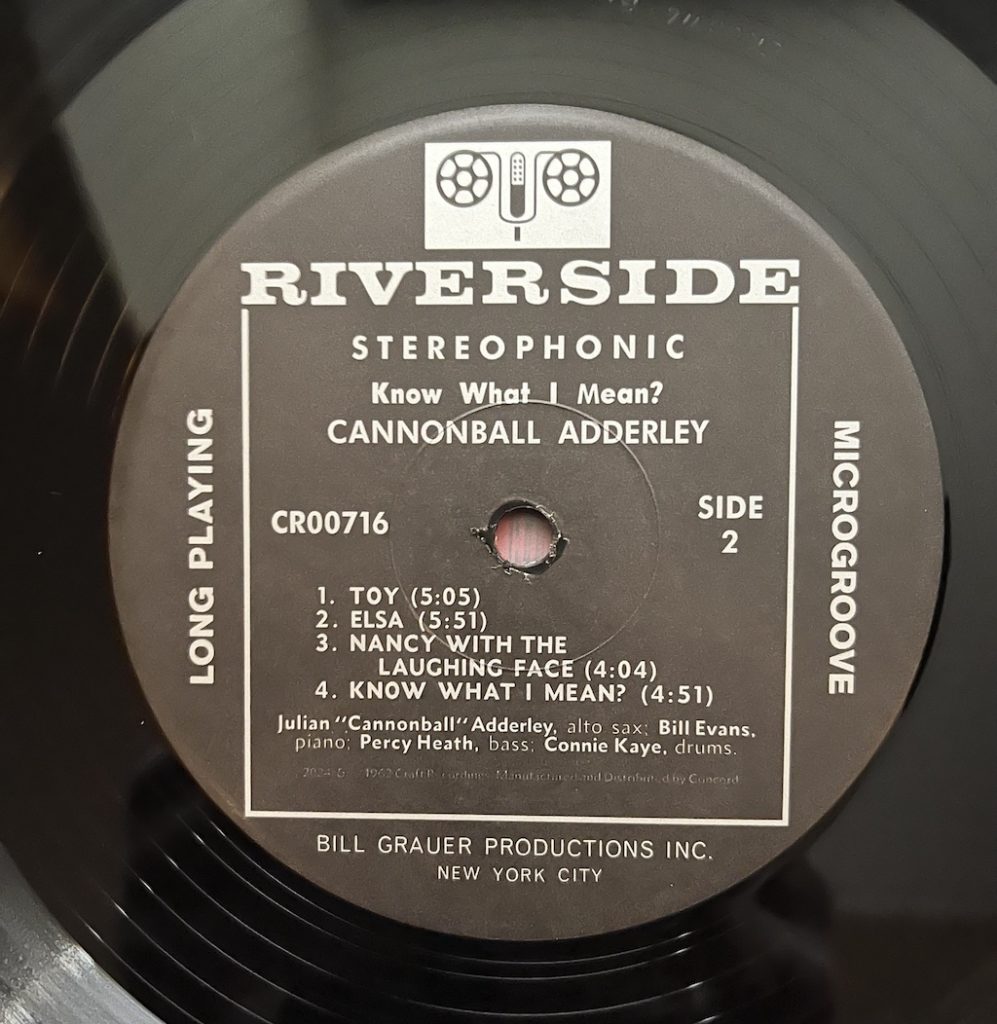
I like how the Craft opens this side on “Toy”- the deep drum sound leading into that buoyant horn lead, which takes us up, down and sideways. Adderley is in his element here and it is his piece, all the way. When Evans comes in it sounds almost subdued, but the bass is more evident (by comparison to the other copies, to my ears/on my system) and they all join to play it out, with Adderley leading a refrain that reprises the melody, and take us to an abrupt stop.
“Elsa” on this copy is also very good- the piano is rich and deep, a cymbal splash noticeable after a few seconds, and again, the hi-hat working a slow, methodical pace, not quite as dark as a Japanese copy but the nature of the composition and playing lend the composition some of this “dark” quality on repeated listening. The quiet surfaces are nice and allow the instruments to stand out. Bass is deep, the thrumming is more evident.
“Nancy” sounds a little more upbeat on this copy than on the Japanese copy, but it’s still a “late night” track, with bluesy riffs on the horn. The pace here is great- it is metronomic. When Evans plays against it, you appreciate why he was so well regarded, especially in this early era. When Evans does his intermezzo against the bowed bass, it is stunning.
“Know What I Mean” The plucked bass is most noticeable at the start, as Adderley interprets with his horn, and Evans plays a cascading set of “studies” leading to the bass/drum interplay. Here, that part is marvelous. The horn sails above it, the rim shots keeping time and then we are fully into the piece with all hands-on deck. The piano seems to have more harmonics here. Adderley brings us close to the end, with an assist from Evans and we are done. (slight cymbal shimmer there too!).
Conclusion
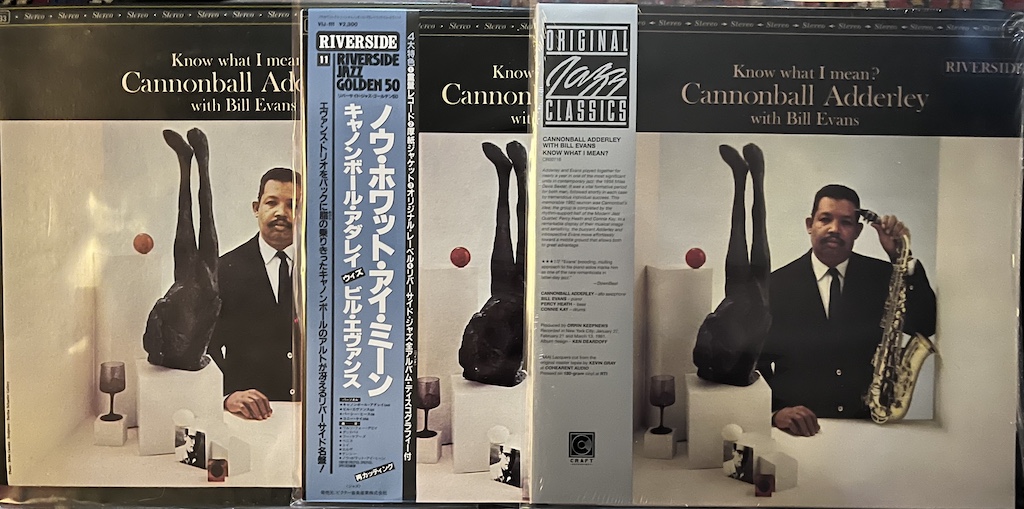
I did not include an early pressing here, given cost- most of the OGs from the US in top shape are a few hundred (which, to me, may be worth spending at some point) but for the sake of sanity as well as reader’s pocketbooks, I figured we ought first to look (and listen) to some of the more commonly available pressings that are reasonably priced. My conclusions are pretty self-evident though in the nuances, different things seem to stand out among these copies, as noted. Based on sonics and price, including shipping, the Japanese copy loses out, though it has its moments and if quiet surfaces are your thing was probably a contender before the Craft was issued. (There have been at least 39 issues of the recording on LP according to Discogs and I have not listened to all of them).
I think the nod goes to the U.S. OJC simply because it has a more visceral presentation, but condition is key here. Pricewise, it should probably be a little more than the price of the Craft, which is a safe bet. That copy enjoys the quiet surfaces of the Japanese vinyl and has better bass than either other copy under the scrutiny here. I did find the U.S. OJC to have more harmonic information in the upper registers of the piano and on the leading edge of the horn, but the Craft acquits itself well and is probably easier to buy with minimal risk (especially from a vendor who accepts pre-paid returns for “new” vinyl).
Bill Hart
February, 2025
Austin, Tx.
Leave a Reply
You must be logged in to post a comment.